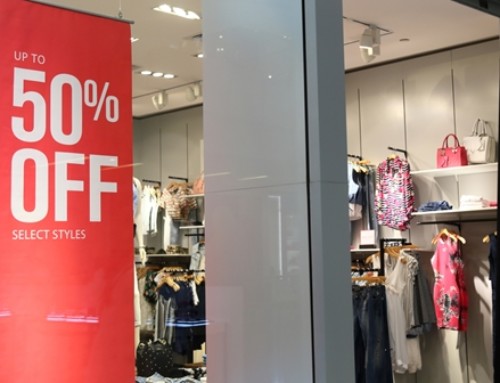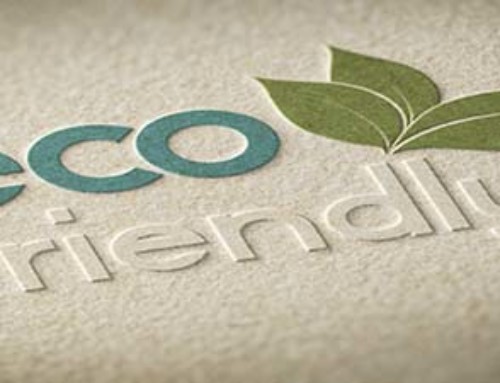Your graphic is only as strong as the substrate it’s printed on. The right material means a long-lasting, engaging display that captures the attention of its intended audience. While most wide-format digital printing products were traditionally produced on paper, more retailers and designers are opting for plastic substrates. Plastics are much more durable than paper and many are eco-friendly. Many are 100 percent recyclable and more and more are being formulated to be biodegradable and contain recycled content.
When and why are plastics better?
Plastics are some of the toughest substrate options, especially when compared to paper, cardboard and wood. They’re strong enough to withstand commercial travel and harsh weather conditions, and they’re easy to shape and bend for complex effects and designs. Yet despite their durability, they’re often lightweight and easy to hang as well. There is typically a plastic product available to provide the functionality you need for any application.
“Printing directly onto plastic saves time and materials.”
Additionally, printing directly onto plastic saves time and materials. Paper graphics typically have to be mounted onto a sturdier surface with an adhesive. Using this methodology requires more product to be printed, adds to your turnaround time and provides more opportunities for error. Printing directly to plastics many times is the “greener” and more cost-effective option to traditional print and mount constructions.
Despite its advantages, environmentally conscious companies are sometimes afraid to use plastic. In terms of eco-friendliness, paper has long been viewed the superior option. Plastic was seen as paper’s toxic cousin, but thanks to UV printing and processing services designed to reduce waste, business can get both durability and sustainability. Hopkins Printing’s commitment to recycling has already saved hundreds of thousands of pounds of plastic from ending up in landfills and the environment. Many of the plastic products used for printing POP graphics already have a recycled component to them. More companies need to take advantage the assorted materials available with recycled content.
Below are individual benefits and common uses of some of the plastics Hopkins works with:
- Acrylic: Lighter than glass, acrylic sheets exhibit glass-like qualities – clarity, brilliance, transparency and translucence – at half the weight with up to 10 times the impact resistance. Acrylic can be tinted or colored, mirrored or made opaque. A number of coatings can be applied to a sheet or finished part for performance-enhancing characteristics such as scratch resistance, anti-fogging, glare reduction and solar reflectivity. Acrylic can also last 10 years without yellowing.
- Fluted PP: Commonly referred to by the brand name Coroplast®, fluted polypropylene is great for yard signs and other outdoor displays. It is also recyclable as a code No. 5 product.
- PETG: Polyethelne terephalate glycol is recyclable material similar to acrylic, but it offers more impact resistance. The addition of glycol makes the PET more heat resistant and prevents it from becoming brittle over time. While less clear than acrylic, PETG is superior in terms of forming, bending, and overall versatility and use.
- Flexible/Rigid Vinyl: This thin substrate can be constructed in many ways, including with or without adhesive, to adhere perfectly to clean, smooth surfaces like glass, metal, cardboard, wood and other plastics. It can be formulated to leave no residue behind. Vinyl is often used for graphics that cling directly to windows. This product comes in many different forms with almost unlimited coating options suitable for different applications. Thickness can typically range from 0.002 inches to 0.030 inches for varying rigidity. Flexible vinyl are used in applications like window clings, decals and industrial markings. Rigid products, on the other hand, are typically used for shelf talkers and similar purposes.
- Expanded PVC: Expanded PVC Foam Sheet is often referred to by its trade names, including but not limited to Sintra®, Komatex® and Celtec®. Expanded PVC’s unique characteristics make it ideal for POP displays, signage, kiosks, dimensional lettering and display boards. Available in many colors and thicknesses, this versatile product is easy to print and cut and is suitable for a variety of interior and limited exterior applications including menu boards, POP displays, exhibits and walls.
- PolyStyrene: This durable, heat-resistant, lightweight substrate is perfect for many display applications. It’s often used in cosmetic displays, backlit signage, packaging and food. Polystyrene is extremely versatile, and its relatively low cost makes it ideal for a wide range of applications. Styrene is 100 percent recyclable under code No. 6.




